| % of Grade | Points | |
|---|---|---|
| Class Participation | 15% | 15 |
| Class Polls | 10% | 10 |
| Individual Assignment #1 (IA1) | 10% | 10 |
| Individual Assignment #2 (IA2) | 10% | 10 |
| Learning Checks (2 of 3) | 20% | 20 |
| Group Project | 35% | 35 |
| Total | 100% | 100 |
August 26, 2025
Customer Insights & Analysis
Course Introduction
Course Mission
Empower you to answer important
business questions through custom-built
customer research programs.
Learning Objectives
- Develop customer-centric research programs that address specific business questions about customer segments and buying journey behaviors.
- Implement primary research studies including qualitative interviews and quantitative experiments to gather actionable customer insights.
- Apply statistical analysis techniques to customer data to test hypotheses and identify behavioral patterns.
- Analyze customer relationships across buying journey stages to determine value perception and decision drivers.
- Synthesize research findings into compelling narratives that support strategic customer management decisions.
A full tour of the research process

What you will learn…
- How to define a research problem and design a research program to address it.
- How to interview people in a qualitative setting.
- How to design and execute survey research.
- How to develop and execute experimental research designs.
- How to analyze and interpret primary field work data.
- How to present your findings to a decision-maker.
Hello, again!
My Journey

Some of the questions I answered through research
- How big is the market for men’s grooming products developed by a celebrity, and what are the unmet needs that align with said celebrity?
- How much equity is in the Lauren Conrad brand?
- Is there still equity in the Miramax brand? Where could it be re-leveraged?
- How could we build a parenting brand around Patrick Dempsey?
- How attached are drinkers to several vodka brands and where is “white space” for a new brand owned by Channing Tatum?
- How could a famous comedian re-deploy her platform to drive turnout in the 2016 election cycle?
My books and podcasts
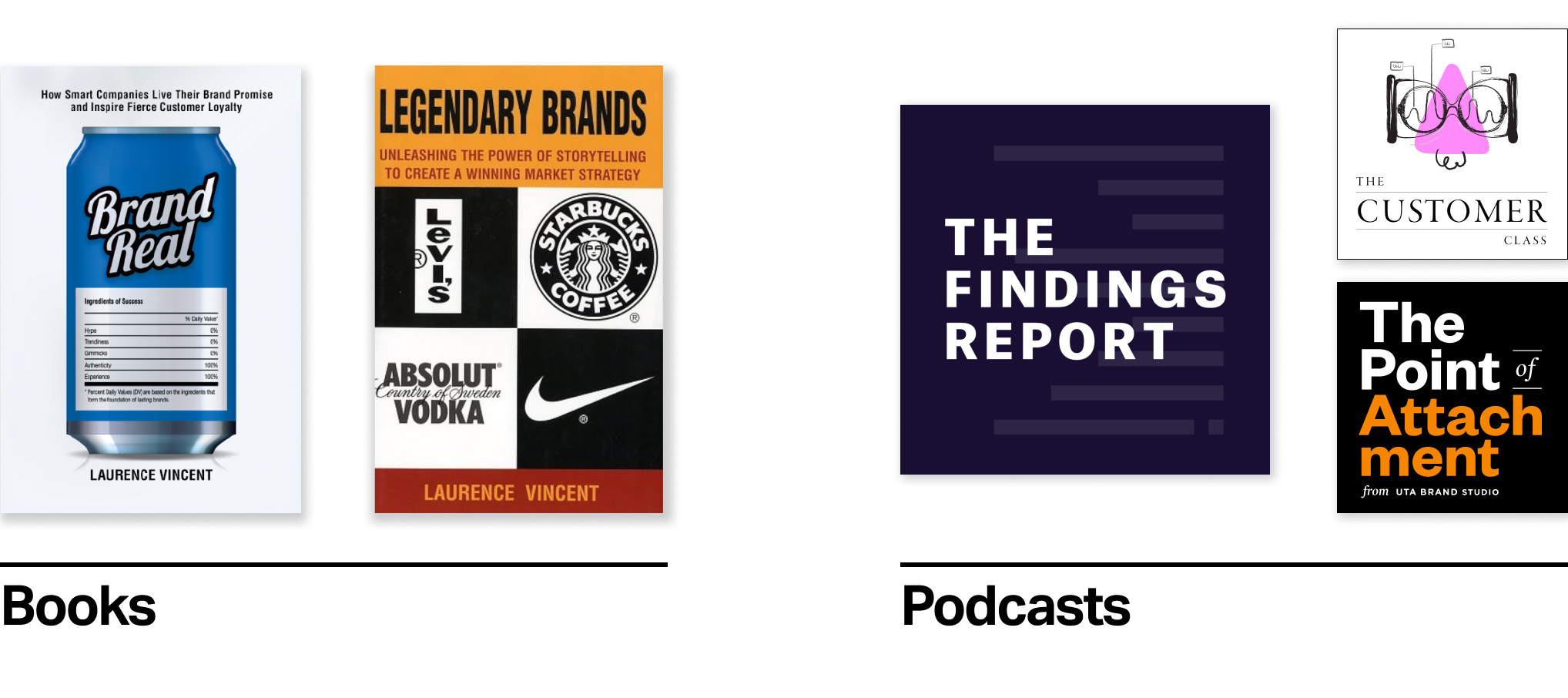
Course Overview
Useful marketing knowledge
- The marketing mix (4Ps)
- Basics of positioning and value propositions
- The customer buying journey
- Any consumer behavior or psychology coursework
Course Reader
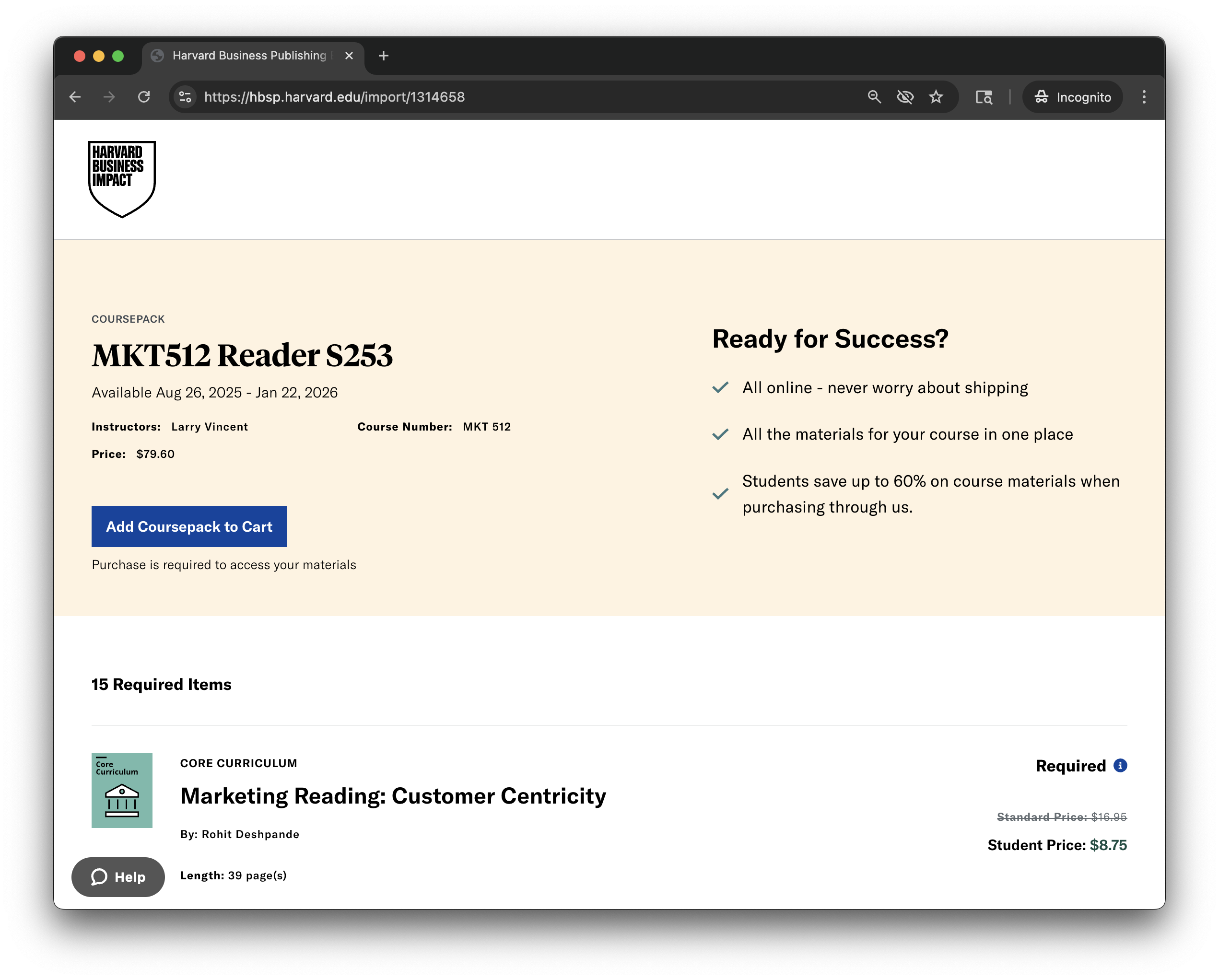
Optional Reading
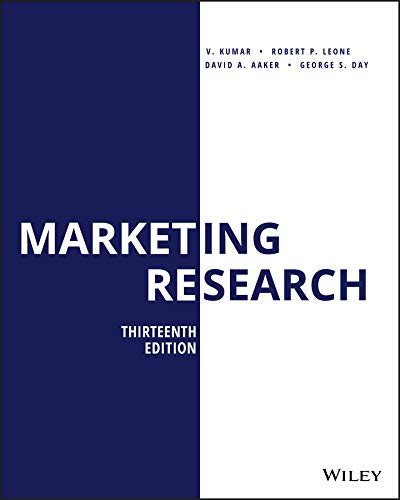
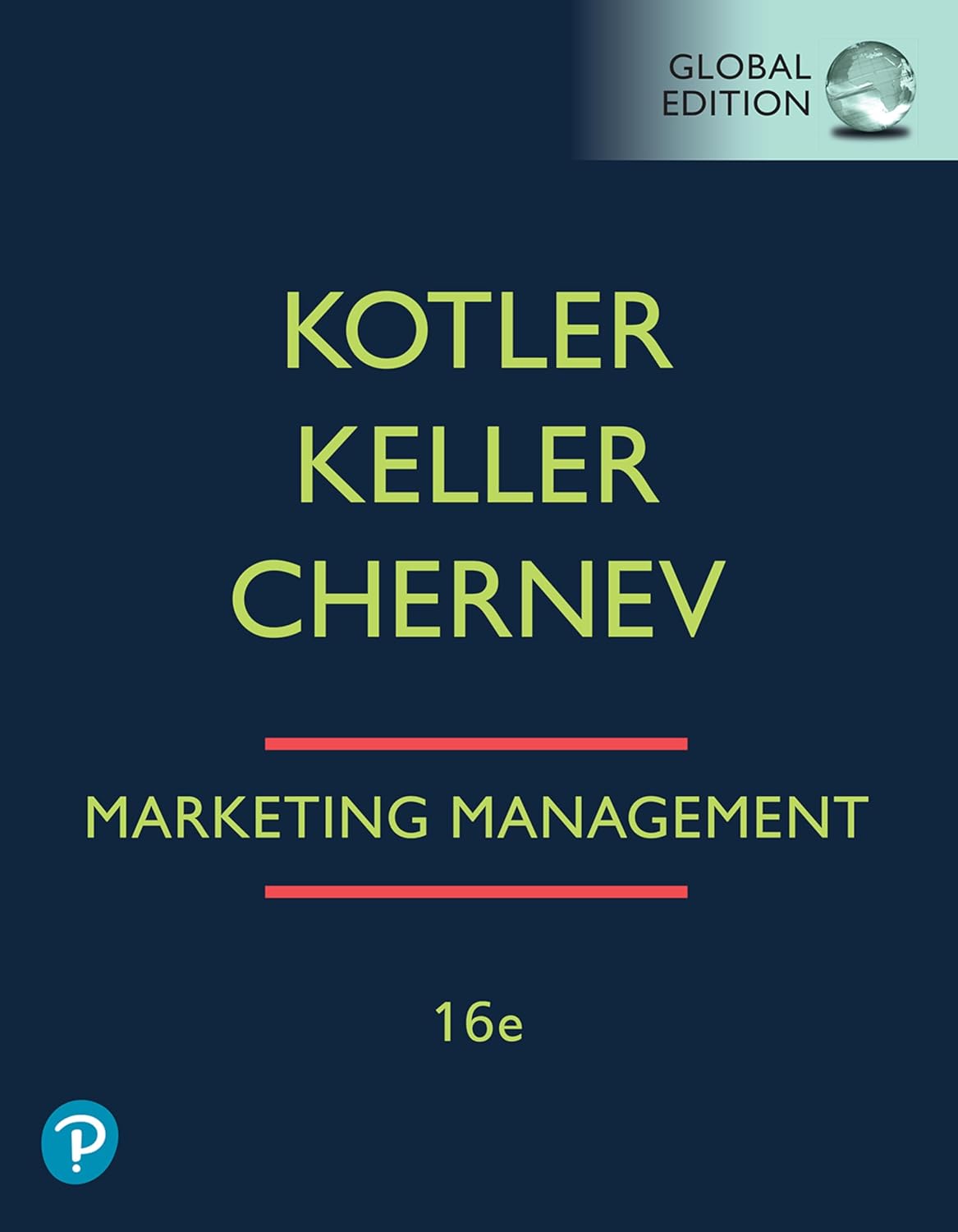
Software
This is a hands-on course that requires tools for data collection and analysis.
- Data Collection–You need an online survey platform (Qualtrics is recommended; free for all USC students).
- Data Analysis–Excel works for most analysis but software such as R, Python, JMP, or Tableau is recommended.
- Data Storytelling–Most students use PowerPoint, Google Slides, Canva, etc. I use the Quarto document system (more on this later).
Statistical Prerequisite
It is assumed all students have experience with basic statistics.
You should be able to…
- Calculate descriptive statistics such as counts, proportions, means, variance, etc.
- Perform statistical tests such as chi-square, t.test, ANOVA, correlation, etc.
- Create and analyze simple linear regression models.
- It is helpful to have some experience with cluster and factor analysis. We will discuss later in the semester, but we only have a few sessions.
R is not required
- I use R for my analysis.
- I post my R code for reference.
- This is not a course on R.
- You will not be tested on R.

Radiant
Radiant is an open-source platform-independent browser-based interface for business analytics in R.
- Used by many students
- Free
- R foundation;
user-friendly
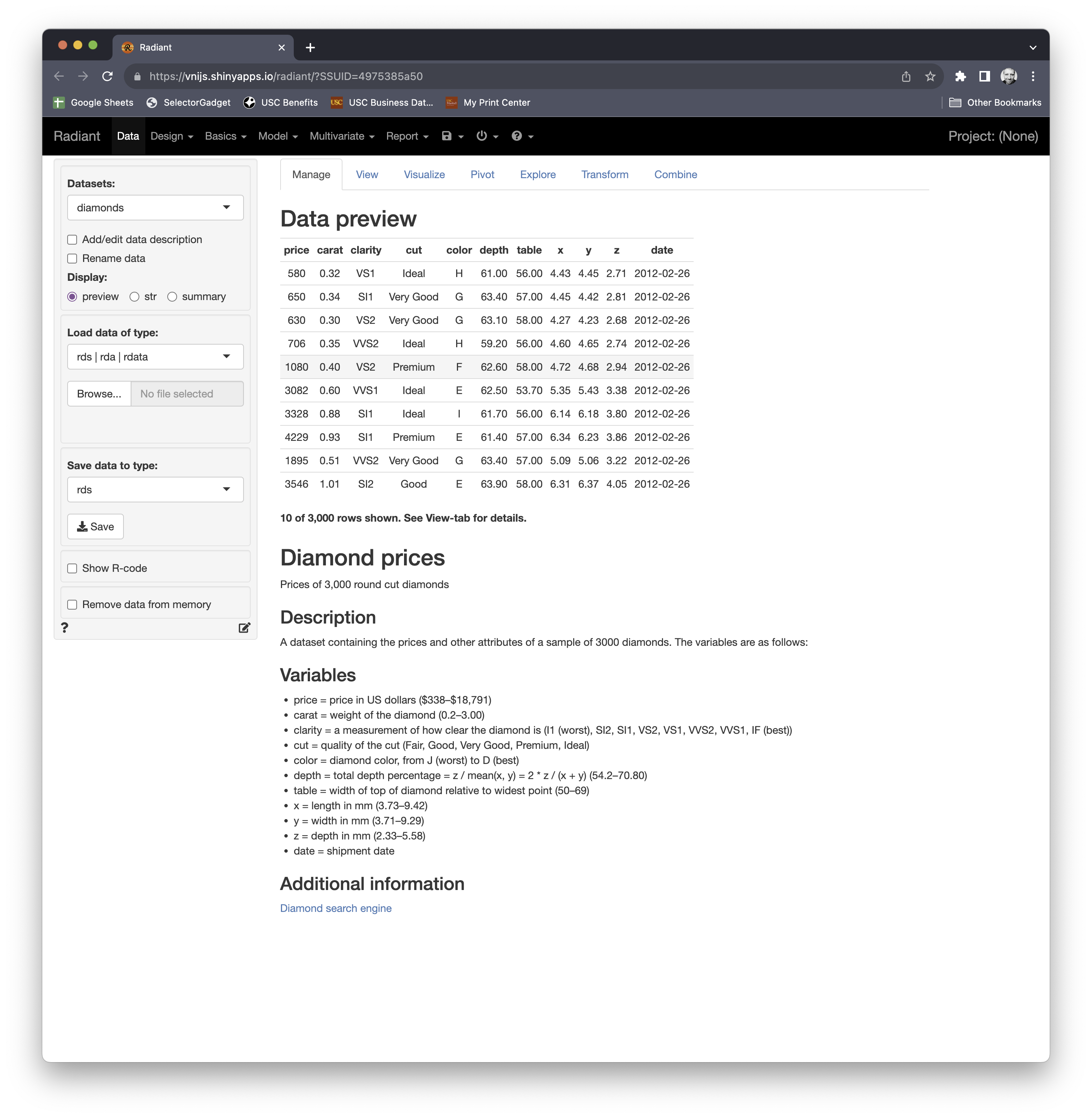
Using AI and Code
- AI platforms are good at writing code for R or Python.
- If you are new to coding, AI has been found to be a good platform to accelerate learning and analysis.
- USC students have access to Copilot, which is used by DSO for a lot of analytic coursework.
- Be careful: AI code is not always correct.
Guest Speakers

September 18

October 21

December 2
Grading
Grade Composition

Learning Checks
- Designed to be taken in about 30 minutes.
- Multiple choice and true/false format.
- One score can be dropped.
- No rescheduling or makeups on learning checks.
There is no final exam
for this course.
( You’re welcome )
Participation
Quality > Quantity
Data can be dangerous
Participation Matters
Participation = Leadership
Seating
A seating chart will be circulated at the next class. Once you choose a seat, please sit in the same assigned seat for all classes. Seats are assigned so that…
- I can learn your names quickly.
- We can credit you for attendance.
- We can ensure you get credit for participation.

Attendance
- Attendance is not graded; however, excessive absence can lead to a lower course grade.
- If you aren’t in class, you can’t earn participation credit.
- If you must miss class, please try to let me know in advance and be sure to review materials from missed sessions.
Group Project
A semester-long exercise to conduct real marketing research for a target company.
Group Project
The group project has five milestones, each with its own individual grading component.
I used some slides from my group project at my interview yesterday and they called me back for another interview.
Former Student, Class of 2023
Focal Companies
Three companies/brands have been pre-selected for group work this semester. All have audiences that are accessible to USC students. They are also brands that have a number of challenges and opportunities.
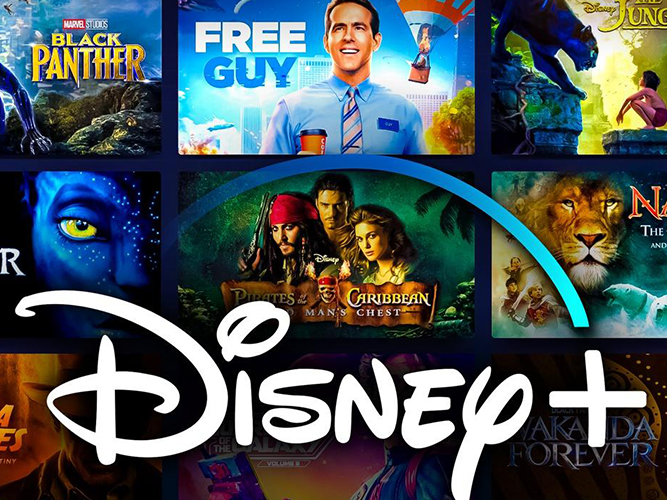
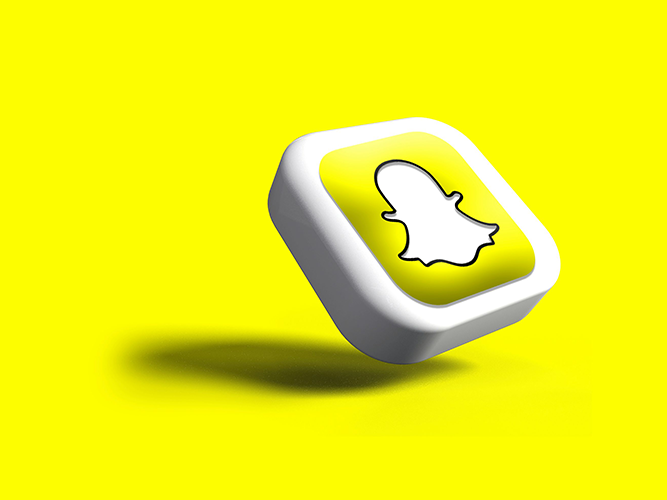

Deciding who researches what
Presentations
Towards the end of the semester, teams will present their research projects to an invited panel of experts that may include representatives from the target companies.
- Panelists will provide real-time feedback on the work
- Great learning and networking opportunity
- Panelists will not assign grades (that’s all me)
To Assign or Not? That Is The Question.
- In the past, I have allowed students to self-select teams
- Many students like the freedom to choose, but some find the process unfair
- Self-selected teams sometimes suffer from homophily (tendency for people to seek out people similar to themselves), which can impede insightfulness
- Pre-assigned teams can sometimes create tensions because of the variance in backgrounds, skills, and preferences
- Statistically, my pre-assigned teams have out-performed self-selected teams
- Let’s discuss!
Student Backgrounds

Working together
and what to expect.
Communications
- All assignments and in-class materials posted to Brightspace.
- Check Brightspace for case discussion study questions.
- Unless otherwise directed, submit all deliverables on Brightspace.
- You can also reach out to me on Slack.
Slides
- Slides are provided to you as a convenience.
- Slides are not a complete record of classes.
- I create my slides using Quarto, a documentation system built in javascript for use with R and Python.
- You can create PDFs of the slides for study purposes.
Creating slide deck PDFs
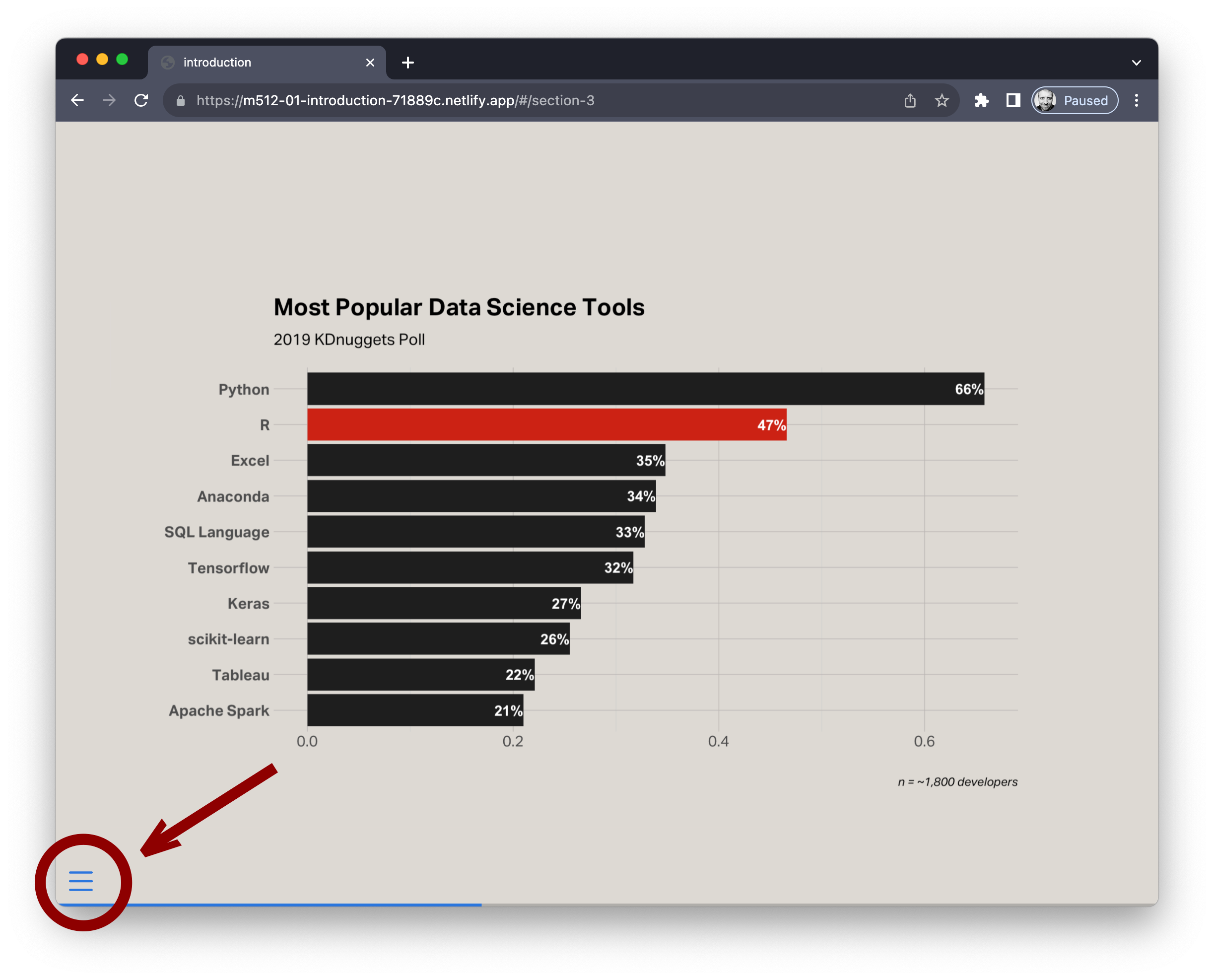
Creating slide deck PDFs
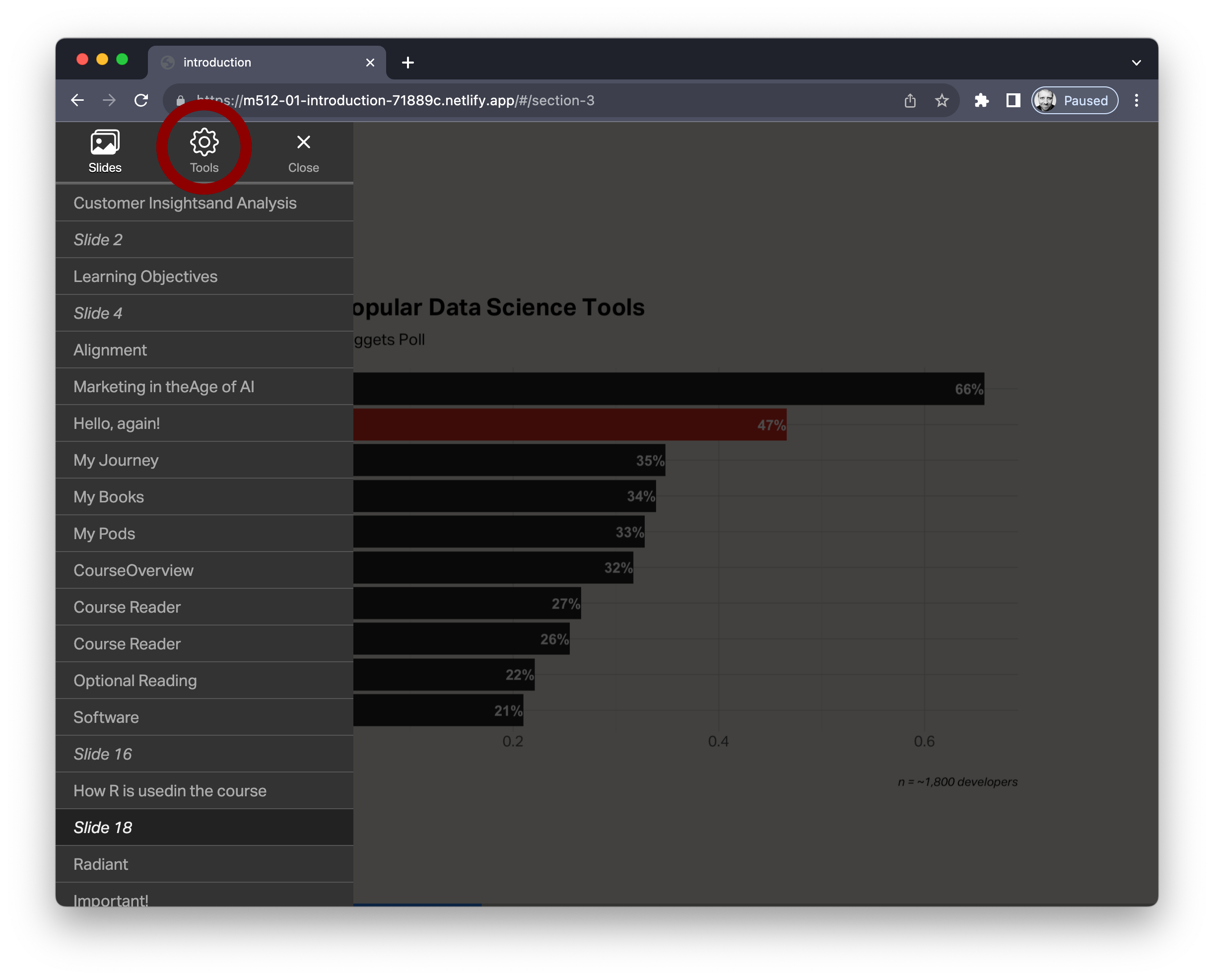
Creating slide deck PDFs
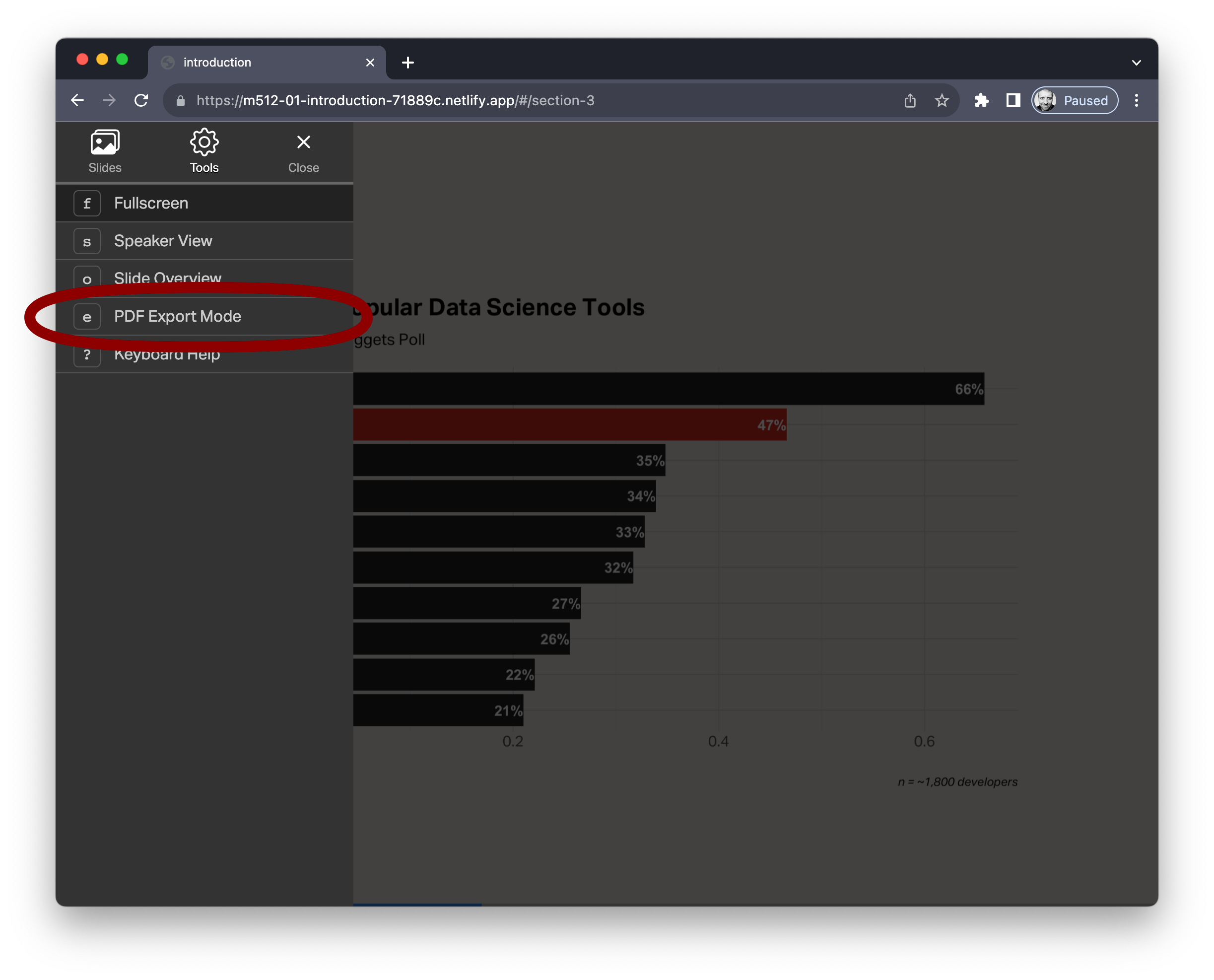
Creating slide deck PDFs
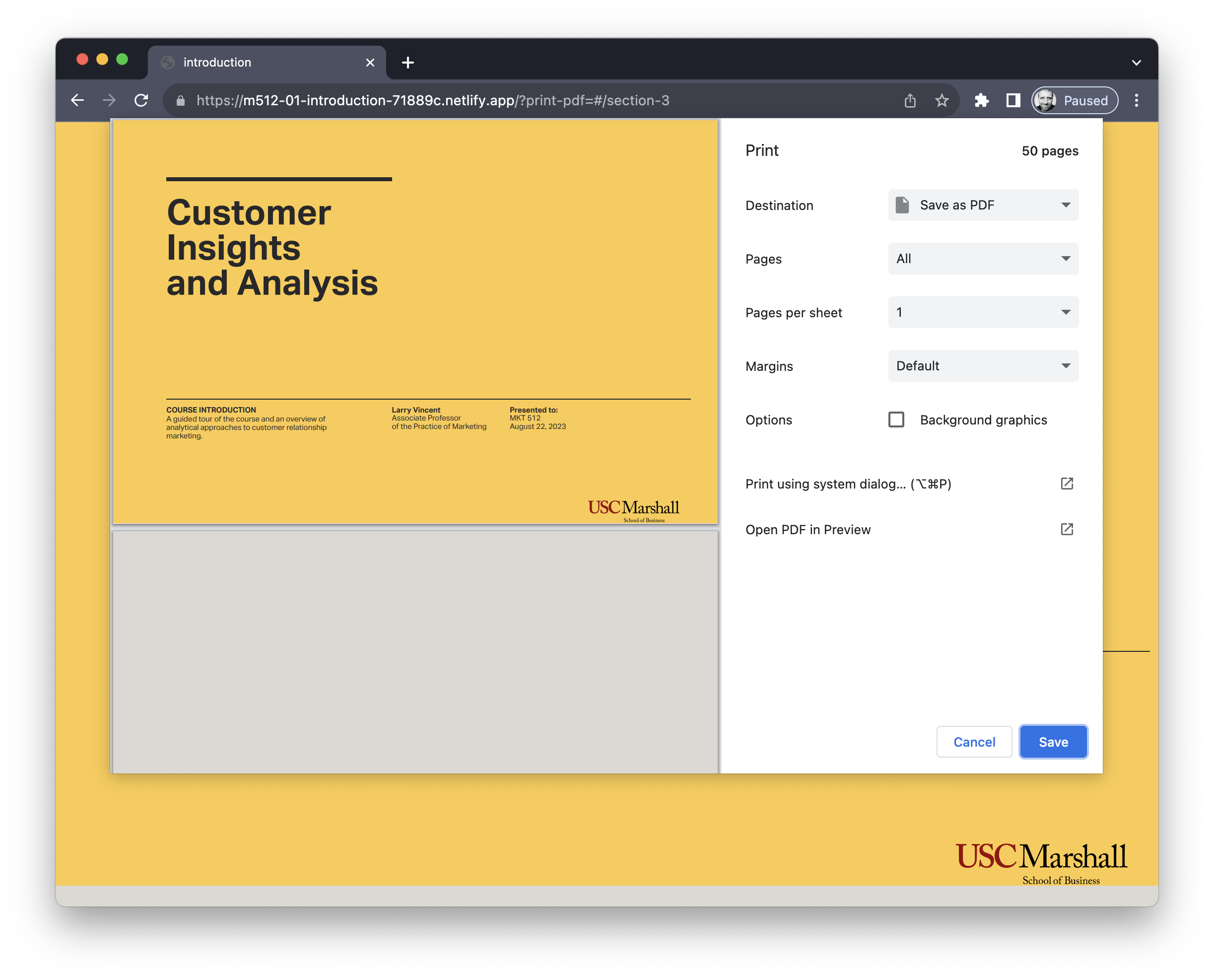
Quarto
- Not required for this course.
- Becoming gold standard for reproducible research
- Write once, publish everywhere: Analyze data once, then output to multiple formats without reformatting
- Growing in use at major companies (Netflix, Airbnb) and consulting firms
- Learning document automation tools like Quarto can give you a competitive advantage in data-driven roles
- Works seamlessly with R, Python, and other analytics tools
- Version control compatible
Electronic Devices
The class is better when
you are fully present!

- Electronic devices MAY be used for note taking and reviewing course materials only.
- No devices during case discussions.
- If devices become distracting, I may ask you to put them away.
Artificial Intelligence
I expect and encourage you to use AI in this course
- DO use AI to brainstorm and “workshop” your ideas.
- DO refine your AI prompts and go beyond the first results.
- DO verify and double check suggestions provided by AI.
- DO acknowledge your use of AI by citing properly in your assignments and other deliverables.
- DO be thoughtful about the appropriateness of using AI in an assignment and what it means.
- DON’T use AI on any assessment without permission.
Marketing in the age of AI
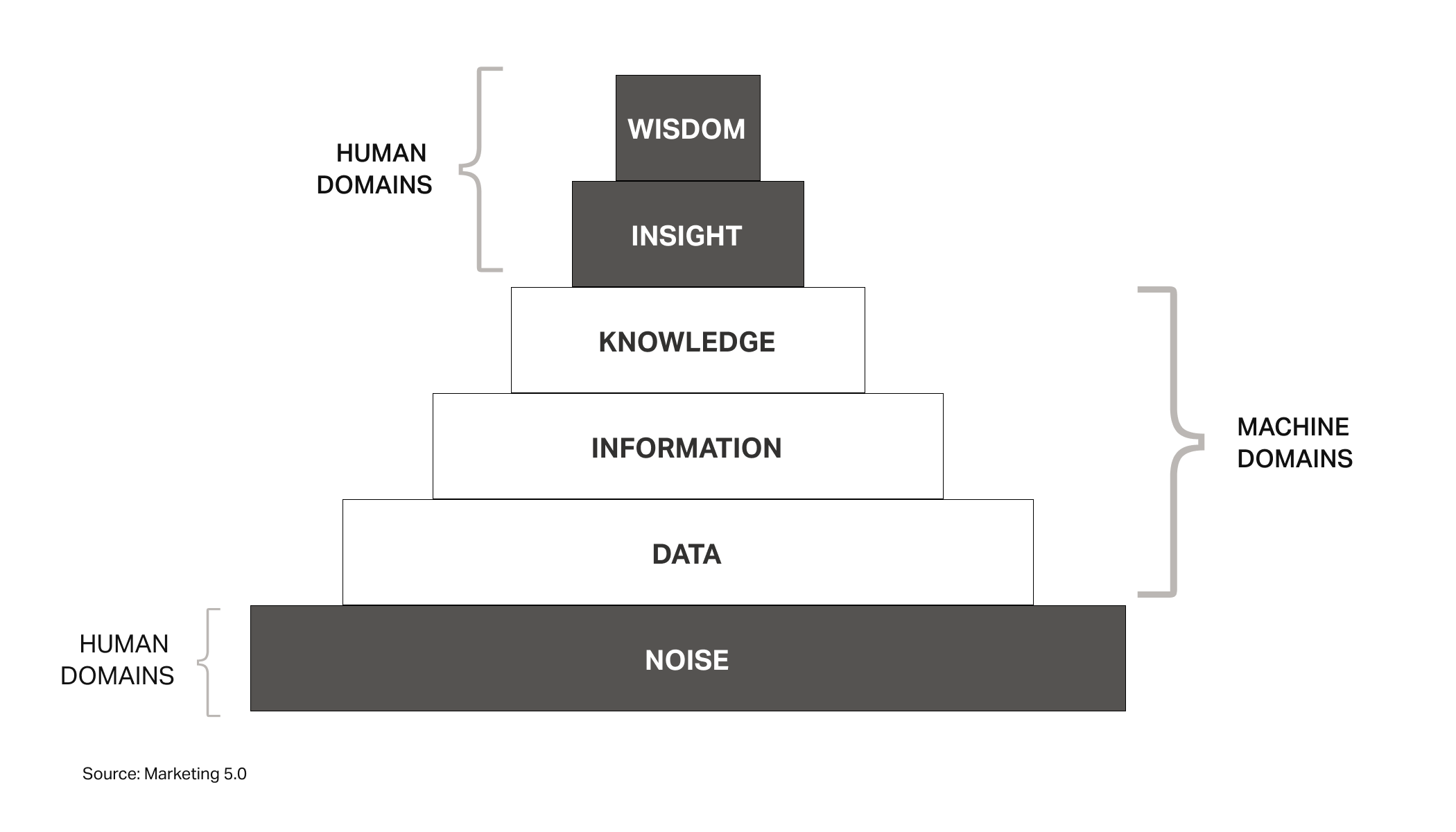
Office hours
- Available by appointment on Calendly (see syllabus for link).
- You can meet with me in groups, if you prefer.
- In the past, some students have arranged for me to do coding tutorials for those interested in going further with statistics
- Not limited to course-related topics :)
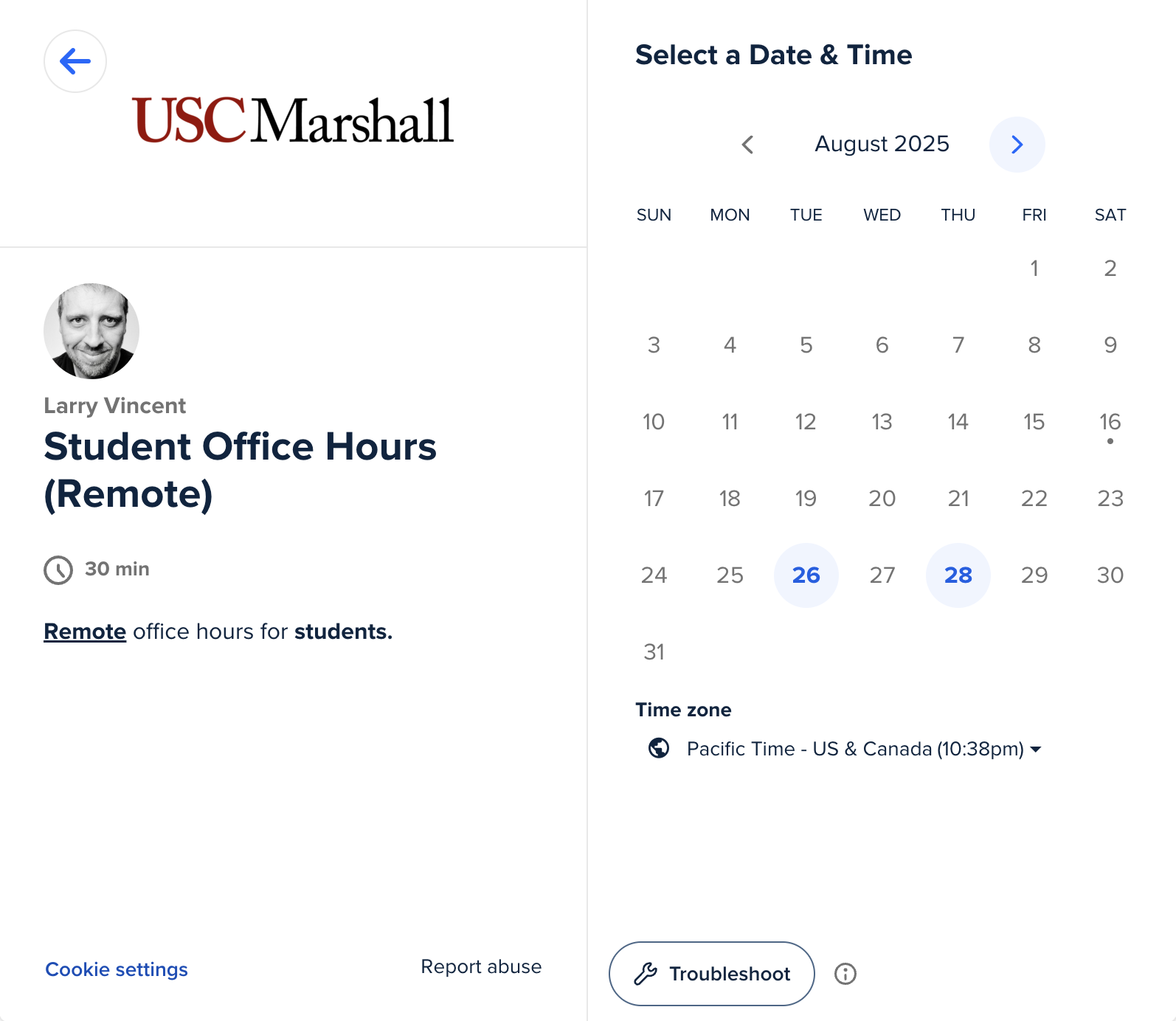
For Thursday
- Review syllabus.
- Complete pre-semester profiling survey.
- Acquire Coursepack–read first articles.
